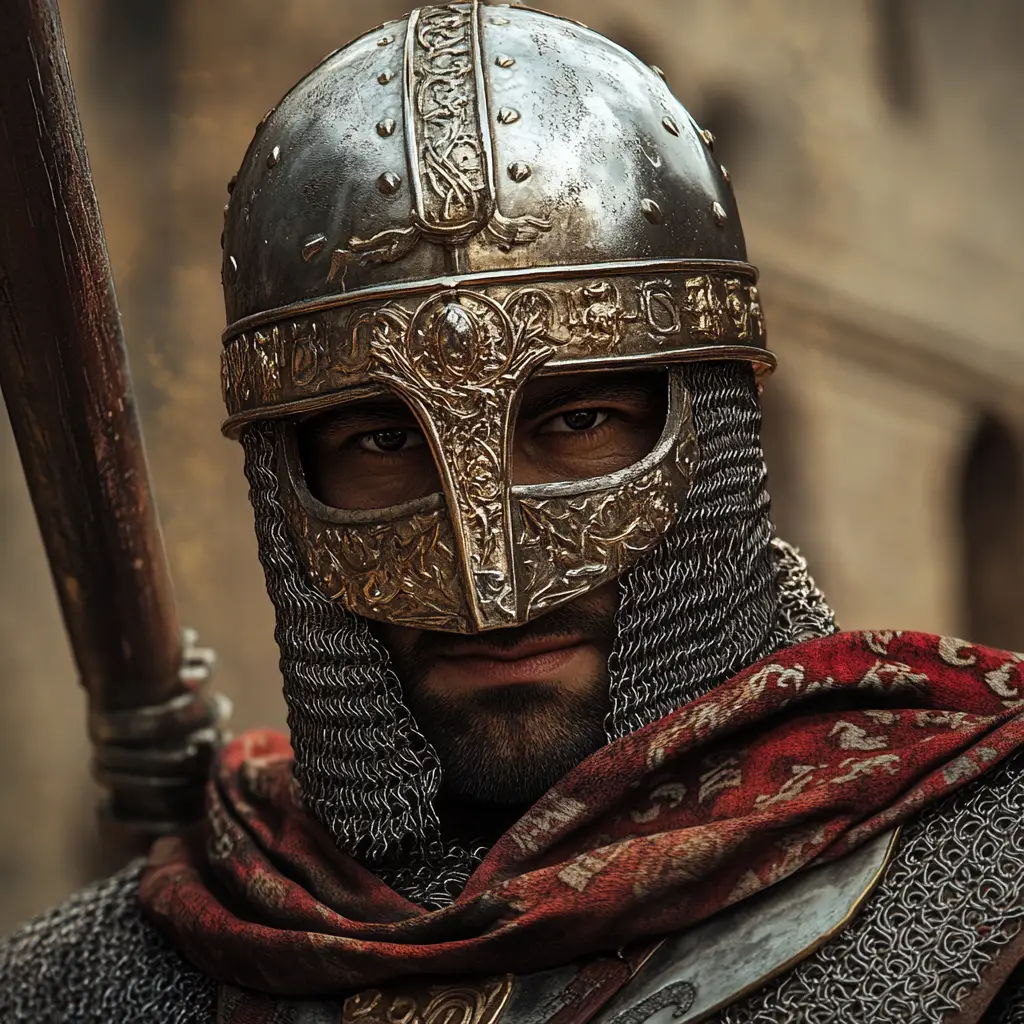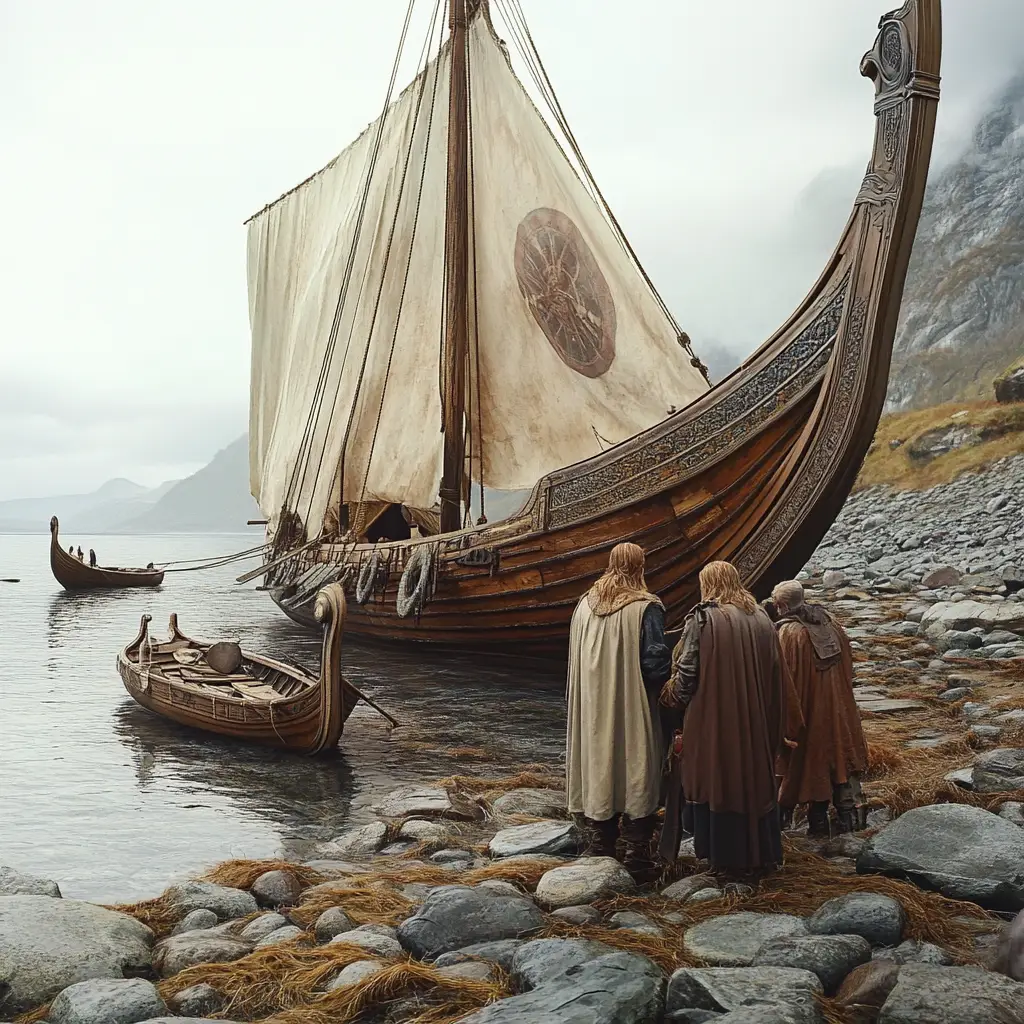There is historical evidence suggesting that Vikings made contact with Africa, although it was not as common as their travels to Europe, the Middle East, and North America.
How Did Vikings Reach Africa?
Trade Routes – Vikings were skilled traders, and through their connections with the Islamic world, they likely acquired goods from Africa.
The Varangian Guard – Some Norse warriors served in the Byzantine Empire’s elite Varangian Guard, which campaigned in North Africa.
Arab and Muslim Accounts – Arabic historians like Ibn Fadlan and Al-Masudi mention Norsemen (Rus), suggesting trade and possible travel beyond the Mediterranean.
Possible Viking Presence in Africa
North Africa – Viking mercenaries in the Varangian Guard may have been involved in battles in modern-day Tunisia, Egypt, and Libya.
Trade with Moorish Spain – Vikings raided parts of Islamic Spain (Al-Andalus) and may have gained access to African goods like ivory, gold, and spices.
Indirect Contact – The Vikings’ silver dirhams (coins) from the Islamic world suggest trade links that could have extended to Africa.
There’s no solid proof of Viking settlements in Africa, but their influence likely reached the continent through trade and mercenary work.
Vikings in Africa – A Lesser-Known Chapter of Norse Exploration
While the Viking Age (circa 793–1066 AD) is best known for Norse voyages across Europe, the North Atlantic, and into North America, evidence also suggests that some Vikings made contact with parts of the African continent. These ventures were not as prominent or well-documented as their expeditions to the west, but they form a fascinating and lesser-known aspect of Viking exploration and trade.
Norse Contact with North Africa
The most credible evidence of Viking interaction with Africa centres on North Africa, particularly through indirect contact via the Islamic Caliphates and the Mediterranean trade routes. During the 9th and 10th centuries, Viking traders and raiders—often referred to as Rus in Eastern sources—travelled through Eastern Europe, along the rivers of modern-day Russia and Ukraine, ultimately reaching the Black Sea and the Caspian Sea.
From there, they accessed vast trade networks linking to the Islamic world, including North African regions such as modern-day Morocco, Algeria, and Tunisia. These were powerful centres of commerce and culture under Islamic rule, well connected to Mediterranean and sub-Saharan markets. While Vikings did not colonise or directly settle in Africa, archaeological finds and written accounts suggest the movement of goods and information between the Norse and North African traders.
Trade and Cultural Exchange
The Vikings were skilled merchants as well as raiders. Items such as walrus ivory, furs, amber, and slaves were traded for silver, silk, spices, and glassware. North African silver coins, known as dirhams, have been found in significant numbers in Viking Age hoards in Scandinavia. These coins, minted in places such as Kairouan in modern Tunisia, reveal the long-distance nature of Norse trade.
Such exchanges were likely conducted through intermediaries—Vikings rarely ventured deep into North Africa themselves. Instead, they traded through Byzantine and Arab merchants, with whom they shared both goods and ideas. This trade brought elements of Islamic culture, art, and technology into Norse territories.
The Viking Raid on Al-Andalus
One of the few recorded Viking incursions into African-adjacent territory occurred in 859 AD, when a large Viking fleet entered the Strait of Gibraltar and raided parts of Al-Andalus (Muslim-controlled Spain) and possibly northern Morocco. According to Arabic sources, the Vikings (referred to as Majus by Muslim chroniclers) plundered towns along the southern Iberian coast and briefly attacked parts of North African cities. These raids were eventually repelled, and many Vikings were killed, but the incident demonstrates the wide scope of their naval capabilities.
Historical Significance
While the Vikings never established a foothold in Africa as they did in places like England, Normandy, or Iceland, their brief encounters with North Africa reflect the interconnectedness of the medieval world. Through trade, travel, and occasional conflict, the Norse became part of a broader global network that included the Islamic world and, by extension, parts of Africa.
Today, Viking-age artefacts—such as Arabic coins and silk—recovered in Scandinavia remind us that their world was far more expansive and diverse than commonly assumed. The Norsemen were not isolated marauders but participants in a dynamic medieval economy that stretched from the Arctic Circle to the edge of the Sahara.



